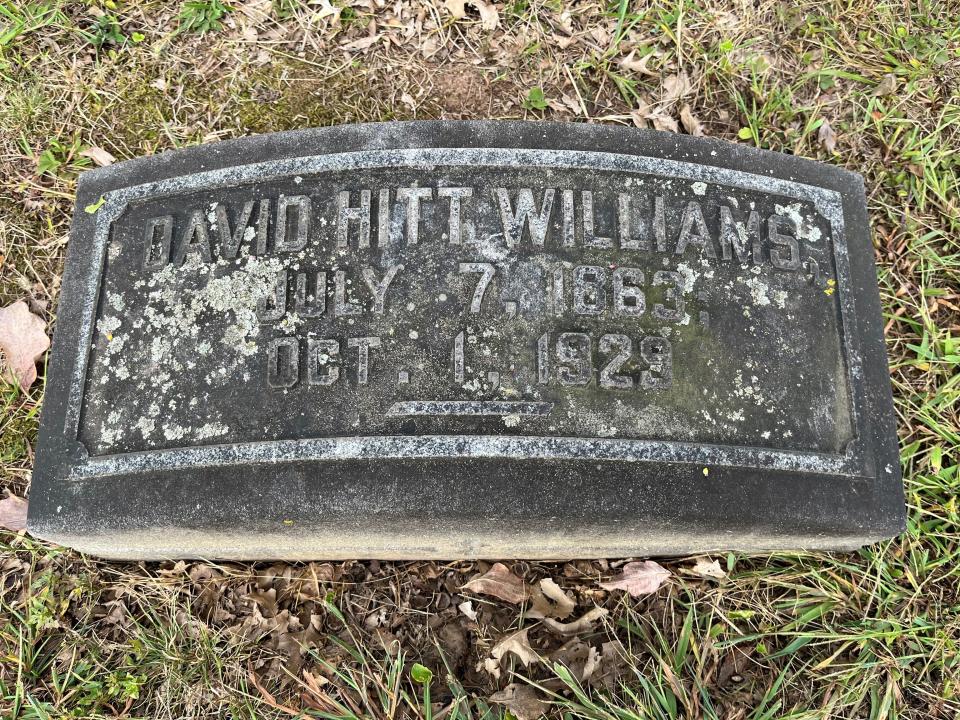Coca-Cola money built the Eugenia Williams mansion, but how did her fortune come about?
In recent months, the Knoxville community has been following the careful restoration of the historic Eugenia Williams home off Lyons View Pike through tours, media coverage and drivers craning their necks as they pass by.
It has been well documented that Williams was the daughter of a Coca-Cola bottling investor, Dr. David H. Williams. That was a main source of family money that allowed her to build the palatial home in 1941 while in her early 40s. It's now being restored under the direction of the current owner, the Aslan Foundation.
A glance at his life reveals that the elder Williams had first been a physician. Some older Knoxville newspaper articles found online tell a little more.
A 1952 News Sentinel story on the 50th anniversary of Knoxville Coke bottler Roddy Manufacturing Co. quotes company founder J.P. “Pat” Roddy Sr., then 84, as saying the venture began when he was a traveling salesman for a wholesale grocery firm. He had stopped at customer Ed Bancroft’s grocery store at Fourth Avenue and Deery Street and learned Bancroft also had an agreement to bottle Coca-Cola, which he did with some primitive equipment behind his store.
Looking to go into his own business, Roddy joined with friend and small stick-candy manufacturer W.H. Goodman and was able to buy the Coke bottling business from Bancroft with $5,000, and they had their first operation on Lucky Street in 1902.
Coca-Cola had been invented by a pharmacist in Atlanta in 1886 as a soda fountain drink. But after some Chattanoogans in 1899 came up with the idea of selling the drink in bottles, where it would have a long shelf life, franchising opportunities became available around the country, and many people became rich.
Such Chattanooga families as the Luptons, Harrisons, Johnstons and others became among the wealthiest people in Tennessee and built palatial homes there. The Roddy family, which would operate the Knoxville bottling plant for generations, sent some of their sons down to board at Baylor School, with which many of these Coke families were also strongly connected.
David Williams’ connection came about when he helped the elder Roddy fiscally as well as physically. The reportedly affable Roddy said they realized they did not have any operating capital after the 1902 purchase. So, he went to see his personal physician – Dr. Williams.
Williams agreed to invest $5,000. While sales were slow initially, with the candy profits helping to carry the company, Coca-Cola eventually went up in popularity nationwide and these pioneering Knoxville bottlers became quite successful. The elder Roddy – who in 1952 also owned a 300-acre cattle farm in West Knoxville near the now-closed Deane Hill Country Club – would see the company bottling 900 cases of the drink an hour 50 years after its founding.
David Williams and later his daughter stayed involved with the business for years as investors. A 1919 city directory at the McClung Historical Collection downtown described him as president of the Roddy Goodman Co., with the elder Roddy listed as secretary, treasurer and general manager.
That directory also said Williams’ medical practice was at 613 Walnut St. in downtown Knoxville and that he lived for a period at 420 W. Main Ave. near today’s Henley Street. His physician’s office is evidently also now razed. Further research would be required to learn if the latter was where he initially met Roddy to talk about Coca-Cola.
The directories say he soon moved to a residence on Kingston Pike before locating to a now-razed home on Lyons View Pike in the early 1920s. That was, of course, before Eugenia Williams constructed the home on this family property with the services of architect and Knoxville native John Fanz Staub, then of Houston.
Like Coca-Cola, his legacy thrives today through the now noted Knoxville residence built with money from his unusual investment.
The Eugenia Williams home is known not only for its appearance, spacious lot, and visibility through its gate, but also for its unique history. After it had been bequeathed to the University of Tennessee with strict stipulations following her 1998 death, it sat empty for years.
A divorcee without children and whose two siblings died young, she had donated it in honor of her father, a UT supporter and Southwest Alabama native. After his death on Oct. 1, 1929, of what was described as a long illness, the newspaper ran a surprisingly short obituary. He was 66 and retired and lived with his daughter at the older Lyons View Pike home.
His wife, Ella Cornick Williams, the daughter of a lawyer, had died in Highlands, North Carolina, in 1914 from an undisclosed terminal illness. They were all buried in Old Gray Cemetery.

This article originally appeared on Knoxville News Sentinel: How Coca-Cola money built Knoxville's Eugenia Williams mansion

